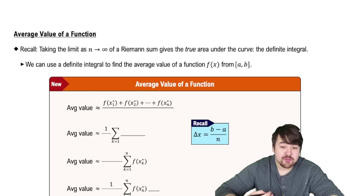Sketching curves Sketch a graph of a function f that is continuous on (-∞,∞) and has the following properties.
f'(x) < 0 and f"(x) > 0 on (-∞,0); f'(x) > 0 and f"(x) < 0 on (0,∞)
 Verified step by step guidance
Verified step by step guidance Verified video answer for a similar problem:
Verified video answer for a similar problem:



 5:58m
5:58mMaster Finding Extrema Graphically with a bite sized video explanation from Patrick
Start learning